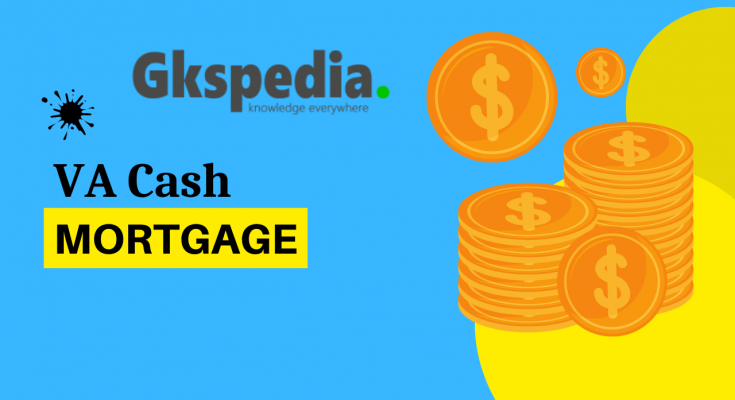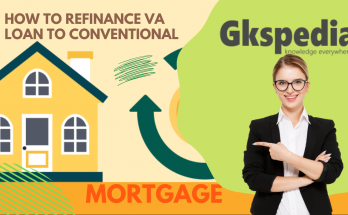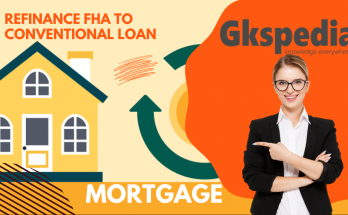Introduction: For United States veterans and active-duty service members, the VA Cash Out Type 1 Mortgage Loan for Home represents a valuable opportunity to tap into the equity in their homes. This mortgage option offers a way to secure additional funds for various purposes, from home improvements to debt consolidation, all while leveraging the advantages of a VA loan. In this comprehensive guide, we will dive deep into the world of VA Cash Out Type 1 Mortgage Loans for Homes, exploring the benefits, requirements, and the step-by-step process to help you make the most of this financial opportunity. Join us as we unlock the potential of this unique mortgage offering, designed to empower veterans and service members in achieving their homeownership and financial goals.
What Is a VA Loan?
A VA loan is a mortgage loan issued by the United States. The Department of Veterans Affairs is secured. Veteran loans aren’t actually federally funded, says Doug Nordman, a US Navy veteran and author of The Military Guide to Financial Independence and Retirement. In return, the VA guarantees to pay lenders up to 25% of the loan amount if they default on the loan. This is a way to de-risk approved lenders and encourages lending to military and veterans.
“One of the biggest advantages of a VA loan, he said, is that the borrower can get a mortgage with no down payment,” says Nordman. “Also, under this agreement, it is possible to cover closing costs without taking out mortgage insurance,” he adds. For those who cannot afford the down payment required for a traditional mortgage or FHA loan, a VA loan is a good alternative. Additionally, with traditional mortgages, if you’re paying less than 20%, you’re usually required to pay a personal mortgage insurance premium. A VA loan can eliminate these costs.
On the downside, however, Nordman points out that VA loans often have stricter requirements. Homes must meet certain inspection and evaluation criteria not required for traditional mortgages. As a result, the time to close can be longer, which can be a problem for some sellers.
VA loans are frequently advantageous for the buyer, but the seller has the right to reject any offer that is contingent on getting a VA loan, according to him. “A buyer with a VA loan may not get a counteroffer in a seller’s market.”
Who Qualifies for a VA Loan?
Because VA loans are issued by private lenders, not the federal government, lenders can set their own requirements in addition to those set by the VA. For example, VA loans require no down payment and have no minimum loan requirements, but individual lenders may have additional criteria.
With no credit or bad credit, not all lenders will approve you, according to Langford. Adds she.
The Department of Veterans Affairs must issue you a Certificate of Eligibility (COE), which is the primary prerequisite. Generally, to earn a COE, you must have at least 90 days of active duty during your military career or have served at least 6 years in the Select Reserve or National Guard. Surviving spouses of eligible military personnel may also qualify for a COE.
According to Langford, a COE can be used multiple times. However, the first loan must be paid off. Otherwise, you can only borrow up to the amount you have paid off.
Refinancing your VA payments can help you save money, but you’ll have to pay closing costs for it. Compare at least 3 of her VA lenders with their respective establishment and other fees to get an idea of how much you should bring to the table.
VA cash-out refinance costs
In addition to closing costs, he pays his VA loan fees, which vary depending on his status as a borrower.
If you have never purchased a home with VA benefits, the VA payment refinancing financing fee is his 2.3% of the loan amount.
If you’re already on VA benefits (say, you have a VA loan and you’re refinancing it), the loan fee is 3.6% for him.
This loan fee can be paid upfront or included in the loan. Remember that if you choose to take out a loan, you will also be charged interest on that amount.
What Types of VA Loans Are Available?
Depending on where you are on your path to homeownership, you should choose from among the several VA loans available. A VA loan only requires his recent COE to be presented to an approved lender.
All VA loans have loan fees that are determined based on the type of loan you receive and the amount deposited. How often you use your COE is another factor that affects your funding fee. some borrowers. B. Disabled or Purple Heart recipients may be waived funding fees. What you need to know about the various VA loan kinds is provided here.
VA Purchase Loan
VA purchase loans are used to purchase existing homes. These loans are generally for the purchase of a primary residence. For example, you can purchase a property with up to 4 units if you want to rent out the remaining units. Simply living in any unit counts that unit as your primary residence.
“VA purchase loans are great for first-time homebuyers,” he says Nordman. Even if they have a worse credit score, a buyer could be able to qualify for a larger mortgage thanks to a VA guarantee to a lender, the expert claims.
VA Cash-Out Refinance
If you have assets in your home and need cash quickly, payment refinancing is the way to do it. Nordman suggests using VA Cash Out Refinancing to either refinance a higher interest rate loan or take out 100% of his built equity.
Whether the COE can be used to refinance payments depends on whether he has used the COE in the past. When refinancing a VA loan, you may only be able to cash in the same amount as you have already invested. However, if you have a traditional mortgage or any other mortgage and want to take advantage of the VA payout refinancing, you should be able to get the most out of your COE.
VA IRRRL (Interest Rate Reduction Refinance Loan)
IRRRL provides a streamlined process for refinancing existing VA loans. IRRRL is a good choice if you want low-interest rates or monthly payments. Additionally, Nordman points out that if you qualify for loan fee waivers, you can basically refinance your VA loans for free.
Additionally, Nordman explains that even if he doesn’t currently live on the property, he can still qualify for the IRRRL if he can show that the residence in question was his primary residence.
This is particularly helpful for active duty military families who still own property and want to benefit from cheaper interest rates despite being transferred to a different mission location, he says.
What Is a Cash-out Refinance Type 1?
As the name suggests, cash-out refinancing allows borrowers to take out a new mortgage and pocket the difference between the new and old loans as cash. More specifically, the new loan will pay off your current mortgage balance. The balance of the new mortgage is handed over to the borrower in cash.
The cash-out loan process relies on the concept of equity. Equity (or ownership) in a borrower’s home is determined by deducting the mortgage balance from the home’s current valuation. For example, if your house is worth $400,000 and your mortgage is $250,000, your assets are $150,000 ($400,000 value – $250,000 mortgage). Cash-out refinancing allows you to turn that stock into cash. Lenders then issue these loans based on three relevant factors. 1) Current house prices. 2) Unpaid mortgage. 3) Loan to Value (LTV) ratio.
Suppose a lender offers her refinancing a payout of her LTV of up to 90%. Using the numbers above, this means that the borrower is eligible for a refinancing loan of her $360,000 payment ($400,000 value x 90% of her LTV). However, before any cash payment can be made, the lender must settle any outstanding mortgage balance. This means the borrower can receive $110,000 in cash from this property – excluding closing costs (up to $360,000 payoff refinancing loan – current mortgage balance of $250,000).
Overview of the VA Cash-out Refinance Program
Most borrowers seeking to refinance their VA payouts inherently understand how VA loans work, but this is not always the case. More specifically, the Veterans Cash Out Refinance Program is the only program that allows eligible veterans with traditional mortgages to refinance their mortgages to the Veterans Program. As a result, some veterans considering this refinancing program may have never used a VA loan before. So let’s take a quick look at how VA loans work.
The Department of Veterans Affairs does not lend money to borrowers. Instead, the VA guarantees a portion of the mortgage loan made by a VA-approved lender (such as a bank or credit union). This guarantee reduces the lender’s risk. This means we can offer our veterans the following favorable terms:
no deposit
low-interest rates
No personal mortgage insurance (PMI) required
With these compelling terms, many veterans with existing mortgages choose to refinance their VA payments. This program allows eligible veterans to replace their current traditional VA loan with a new VA loan with different terms (interest rate and repayment term). And if you have equity in your home, VA Payouts Her Refinance, as the name suggests, allows you to refinance to a larger loan and pocket the difference as cash.
Each lender offers different terms, but many of his VA-approved lenders offer not only the original his VA loan, but also the veteran’s 100% of the home’s value for this refinance. Allows you to borrow up to VA policy allows you to borrow up to your local Fannie Mae/Freddie Mac compliant credit limit with no down payment.
Why Do a Cash-Out Refinance?
While not exhaustive, here are some common reasons people want to withdraw cash from their homes through loan refinancing.
Consolidate your debt: If you owe more than a few thousand dollars on credit cards, student loans, or car loans, you’re probably paying far more interest than your mortgage. As a result, many people borrow money from payment refinancing to pay off other high-interest debt. This will A) reduce interest payments and B) consolidate the debt into one mortgage payment. This is administratively easier.
Financing a big purchase: If you’re looking to add a living room to your home or make a down payment on investment property, you may not have enough cash on hand. Payment refinancing gives you a way to access the money you use for these big purchases at a lower interest rate and a longer repayment period. Financial Emergencies Payments: Unfortunately, medical, legal, business, and family emergencies can come out of nowhere. And most of these emergencies come with high bills. Instead of jumping into retirement savings or running out of credit cards, a cash-out refinance can provide you with the money you need to meet these financial emergencies.
Type 1 and Type 2 Cash-out Refinances
Currently, the VA offers two main forms of cash-out refinance: type 1 and type 2. In the following two parts, we’ll go over the special factors that apply to both loans.
Type 1 Cash-out Refinance
A Type 1 payout refinancing occurs when the loan amount of the new loan is less than or equal to 100% of the repayment amount of the loan being refinanced. This is generally not considered a cash-out refinancing. This is because the borrower does not take out a larger loan and collects the difference in cash. However, according to VA guidelines and naming conventions, this type of refinancing qualifies as cash-out refinancing.
Type 1 VA to VA Refinancing Requirements
spice certification
Fee refund period certificate
Note: This means that the borrower must collect all costs/fees on the new loan within 36 months from closing. Assume the total cost/fees for the new loan is $2,000, but the new loan reduces the borrower’s monthly payments by $100. In this situation, the borrower will recover all costs/fees in 20 months ($2,000 in costs/fees / $100 in monthly savings). This is shorter than his 36-month period required.
Type 1 Non-VA to VA Refinancing Requirements
At least one of the above significant net benefits to the borrower
Type 2 Cash-out Refinance
Type 2 refinancing represents a traditional cash-out refinancing where the borrower pockets the difference between the new loan and the old loan as cash. More specifically, a Type 2 payoff refinance occurs when the loan amount of the new loan exceeds his 100% of the repayment amount of the loan being refinanced.
Type 2 VA to VA Refinancing Requirements
spice certification
At least one of the above significant net benefits to the borrower
Type 2 Non-VA to VA Refinancing Requirements
At least one of the above significant net benefits to the borrower
Applying for a VA Cash-out Refinance Loan
Confirm Eligibility
Veterans and active duty military personnel must prove they are eligible to refinance payments via a Certificate of Eligibility (COE). This document proves to the lender that she is indeed eligible for her VA loan. If you have not yet applied for your COE, you can apply directly on eBenefits.
Find a Lender
Once you have your COE, the next step is to find a VA-approved lender. Again, the VA does not actually offer loans. Instead, take out a loan from your bank, mortgage company, or credit union when you complete the refinancing of your VA payment.
As with any big purchase, don’t jump on the first offer. Research several different lenders to determine which term best suits your situation.
Provide Required Info to Your Lender
As with your original mortgage, you will be required to provide financial documentation from your lender during the refinancing process for your VA payment. In addition to the COE, lenders typically require the following documents:
Payslips for the last 30 days
W-2 in the last two years
the previous two years’ federal income tax returns
Other income or debt documents that affect your loan application
Lenders will review this document during the underwriting or approval process while also ordering an asset valuation. A VA-licensed appraiser will determine the value of your home and see how much you can borrow with VA Payout Refinance.
Close on the New Loan
The final step in VA Cash-Out refinancing is the actual loan closing. This includes answering the lender’s final questions about your financial situation, paying closing costs, and signing final loan documents with a settlement agent or attorney. It may take a few days for the paperwork to be filed, but once completed, there is a good chance that the disbursed refinancing proceeds will be wire-transferred as a paper check or directly to your bank account.
One thing to note is that most veterans will have to pay their VA loan fees as part of refinancing their payments. For first drawdown loans, this fee is 2.3% of the loan amount. 3.6% for follow-up loans. However, certain disabled veterans and living spouses do not have to pay this fee. If you think you fit into one of these categories, you can check directly with VA.




